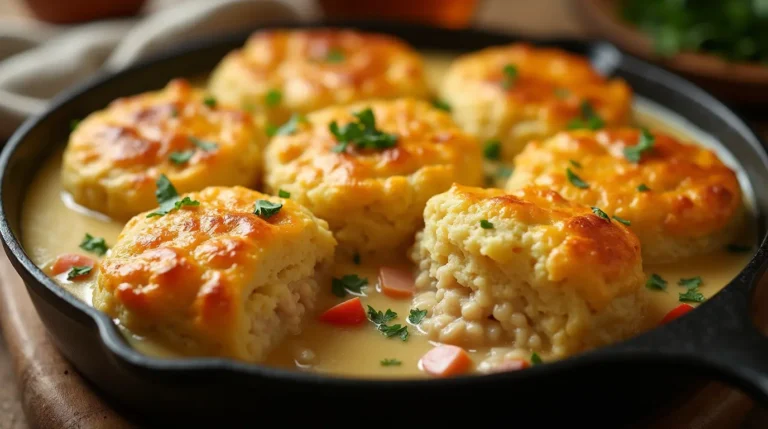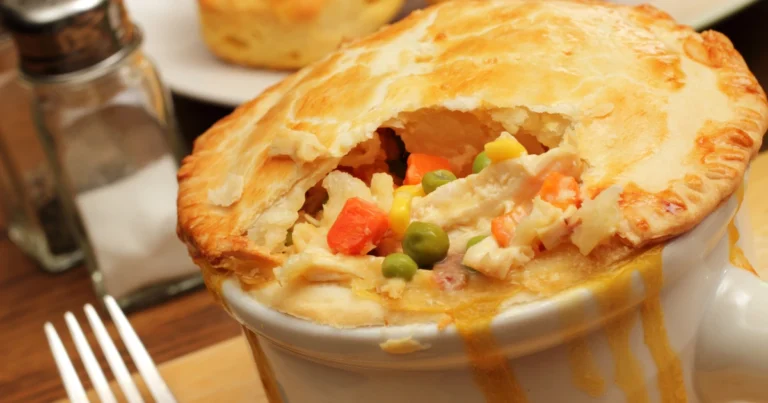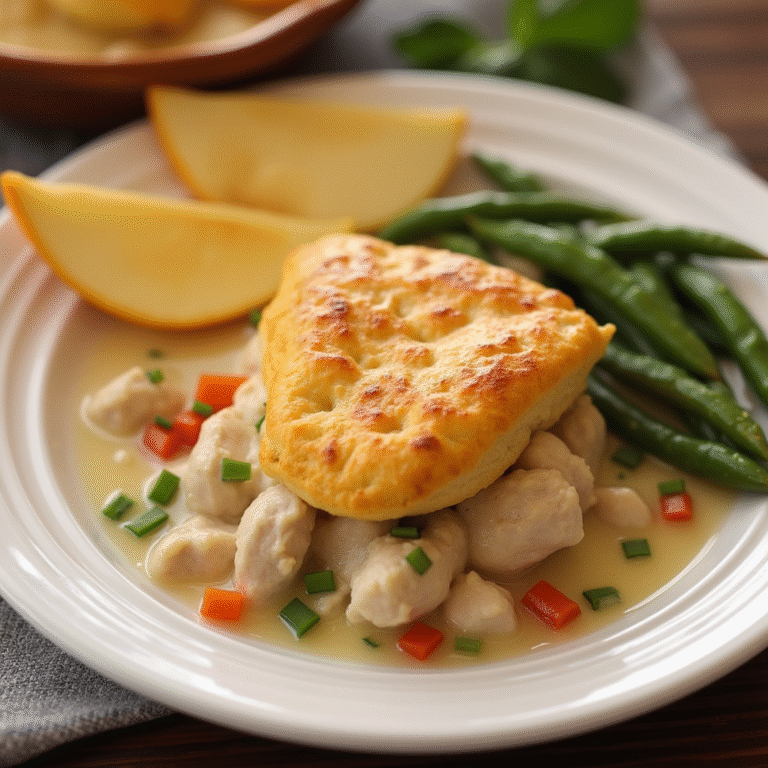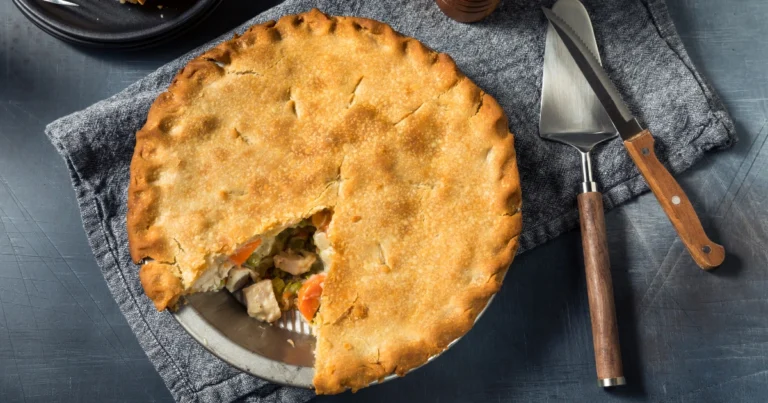Chicken Pot Pie Nutrition: What You Need to Know
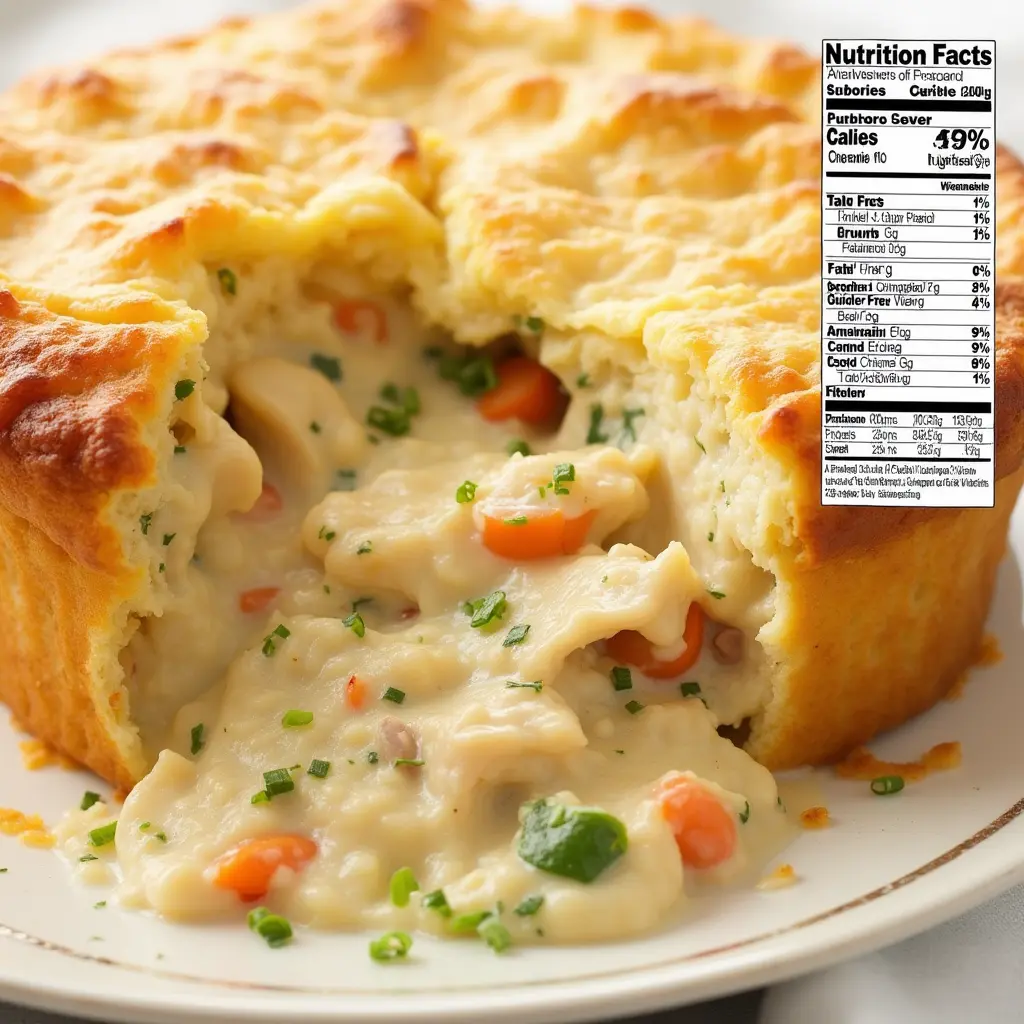
Every time I pulled a golden-crusted chicken pot pie from the oven, I never paused to consider its nutritional impact. Like many comfort food lovers, I simply savored each delicious bite without thinking about what was truly on my plate. Understanding chicken pot pie nutrition isn’t about destroying your culinary joy—it’s about making informed choices that balance taste and health.
Chicken pot pie represents more than just a meal. It’s a classic American dish that connects generations, warming hearts and filling stomachs. But beneath that flaky crust lies a complex nutritional profile that deserves your attention. Your body processes every ingredient, and knowing what’s inside can help you enjoy this beloved dish smarter.
This guide will walk you through the essential details of chicken pot pie nutrition. You’ll discover how to decode nutrition labels, understand serving sizes, and make choices that align with your dietary goals. Whether you’re a fitness enthusiast, a busy parent, or simply someone who loves good food, this information will empower your eating decisions.
Table of Contents
Understanding Chicken Pot Pie Nutrition
Chicken pot pie nutrition is complex, with many nutrients that affect your diet. It has a mix of macronutrients and micronutrients. These elements add to its value in your diet.
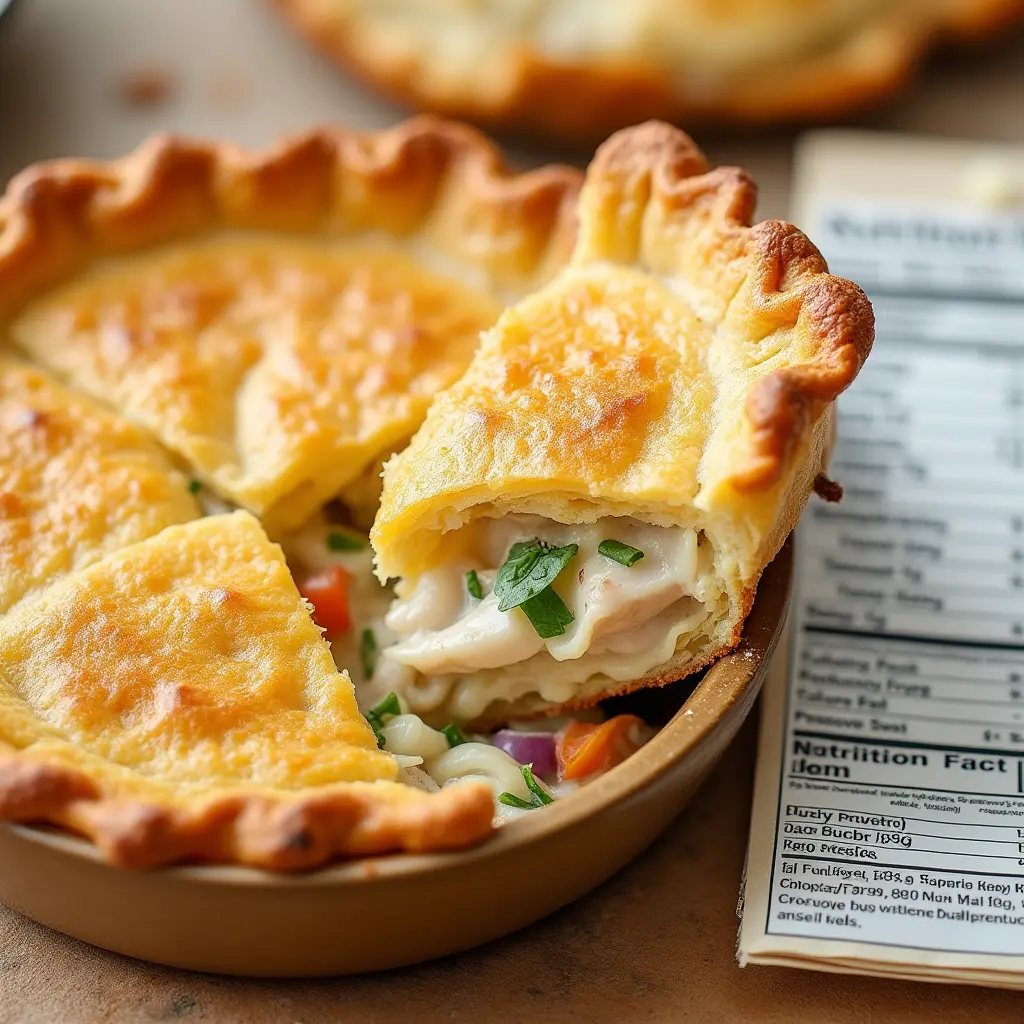
Essential Nutritional Components
Chicken pot pie has a variety of nutrients. It offers both taste and nutrition. The pie typically includes:
- Protein from chicken meat
- Carbohydrates from pie crust and vegetables
- Fats from butter and cream-based fillings
- Vitamins and minerals from mixed vegetables
Serving Size Guidelines
Knowing the calories in homemade chicken pot pie is key. A serving size is usually 350-450 calories. This depends on the ingredients and how it’s made. Here are some serving sizes:
- Individual 5-6 ounce portions
- Half a standard pie for larger appetites
- Quarter pie for lighter meals
Daily Value Percentages
Looking at chicken pot pie nutrition, daily value percentages are important. A serving can be a big part of your daily needs. Here’s what you can expect:
- Protein: 20-25% of daily needs
- Carbohydrates: 15-20% of daily requirements
- Total fat: 30-35% of recommended intake
Understanding these nutritional breakdowns helps you make informed dietary choices while enjoying this classic comfort food.
Calorie Content in Popular Chicken Pot Pie Brands
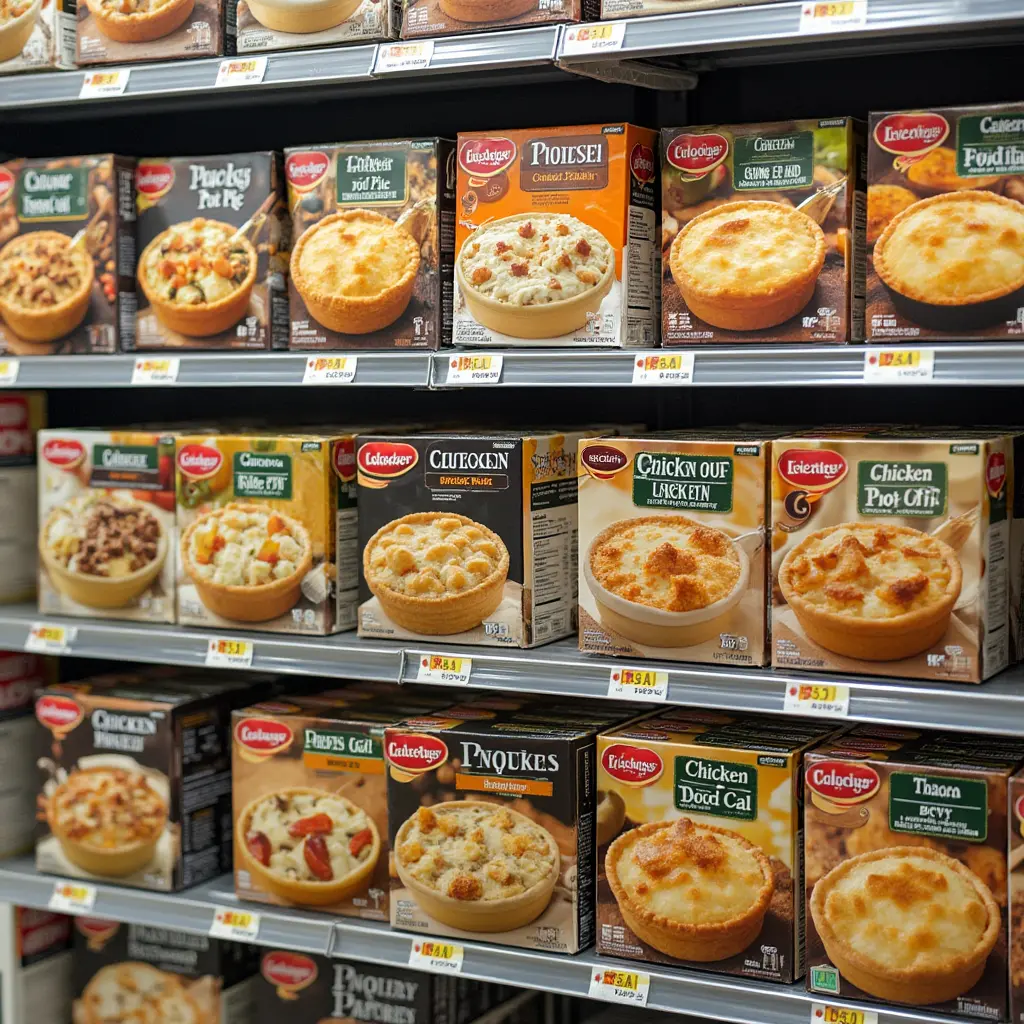
When you look at chicken pot pie brands, knowing their calorie count is key. Different brands have different nutritional values. This can greatly affect how many calories you eat each day.
Let’s look at the calorie counts of some well-known chicken pot pie brands:
- Marie Callender’s chicken pot pie nutrition is about 740 calories per serving
- Stouffer’s frozen chicken pot pie has around 620 calories
- Boston Market chicken pot pie has 600-650 calories
- Amy’s vegetarian chicken pot pie is a lighter choice at about 480 calories
Marie Callender’s chicken pot pie nutrition is quite high in calories. This means you should watch your portion sizes if you’re counting calories.
The calorie count can change based on ingredients, crust thickness, and recipe. When picking chicken pot pie brands, think about these things:
- Serving size
- Total calorie count
- Nutritional balance
- Personal dietary goals
While taste matters, knowing the nutritional impact of your favorite chicken pot pie brands is important. It helps you choose healthier options without losing flavor.
Carbohydrates and Protein Breakdown
Looking into chicken pot pie nutrition means checking its macronutrients. Carbs in chicken pot pie are key to its nutritional value.
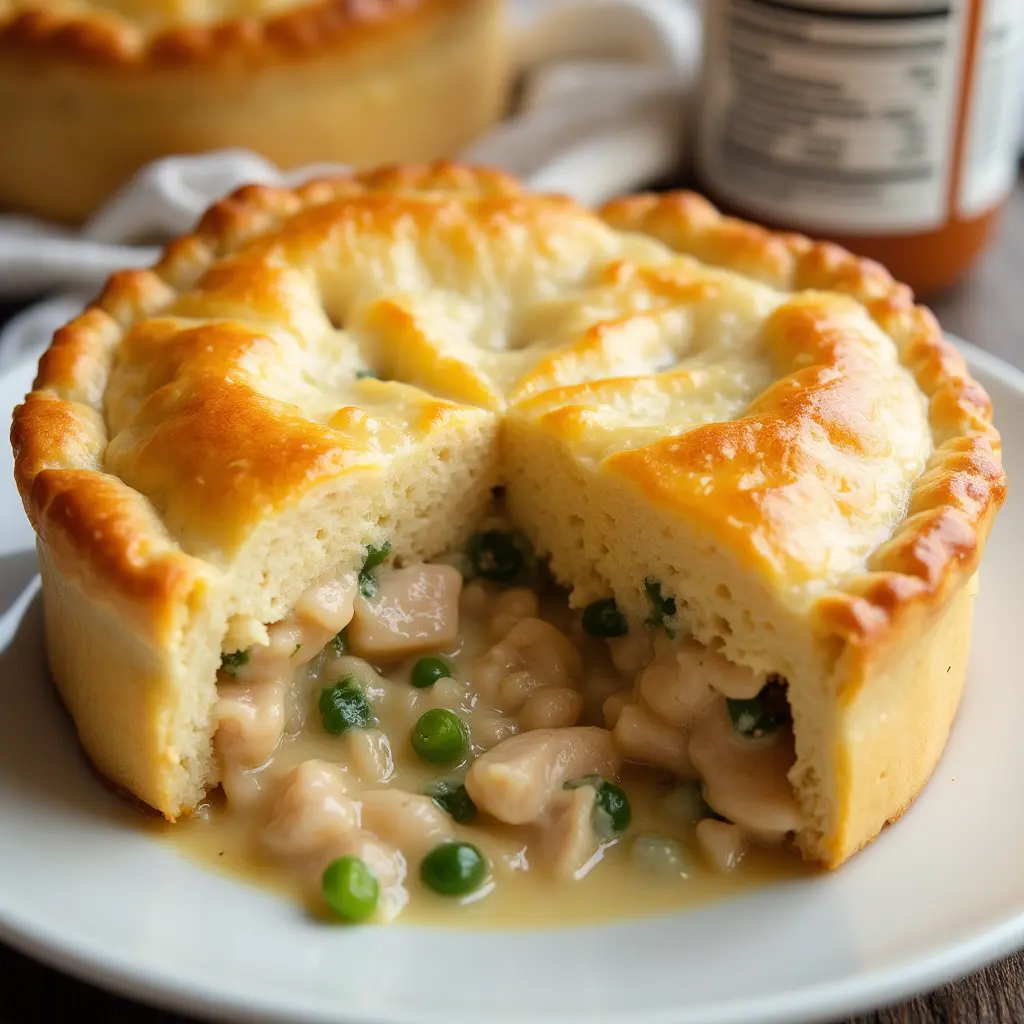
The carbs in chicken pot pie mix complex and simple carbs. These carbs add flavor and texture to the dish.
Complex Carbohydrates vs Simple Sugars
The carbs in chicken pot pie include:
- Flour-based pie crust (complex carbohydrates)
- Vegetable ingredients (additional complex carbs)
- Small amounts of added sugars
Complex carbs give long-lasting energy. Simple sugars provide quick energy. The mix affects how your body uses the meal.
Protein Sources and Quality
Chicken pot pie gets protein from:
- Chicken meat (main protein source)
- Dairy like cream or milk
- Potential egg in the crust
These proteins have amino acids for muscle health and nutrition.
Fiber Content Analysis
Fiber is important in chicken pot pie nutrition. Vegetables and whole grain crust add fiber for digestive health.
Pro tip: Making chicken pot pie at home lets you control the nutrition and boost fiber.
Marie Callender’s Chicken Pot Pie: A Nutritional Analysis
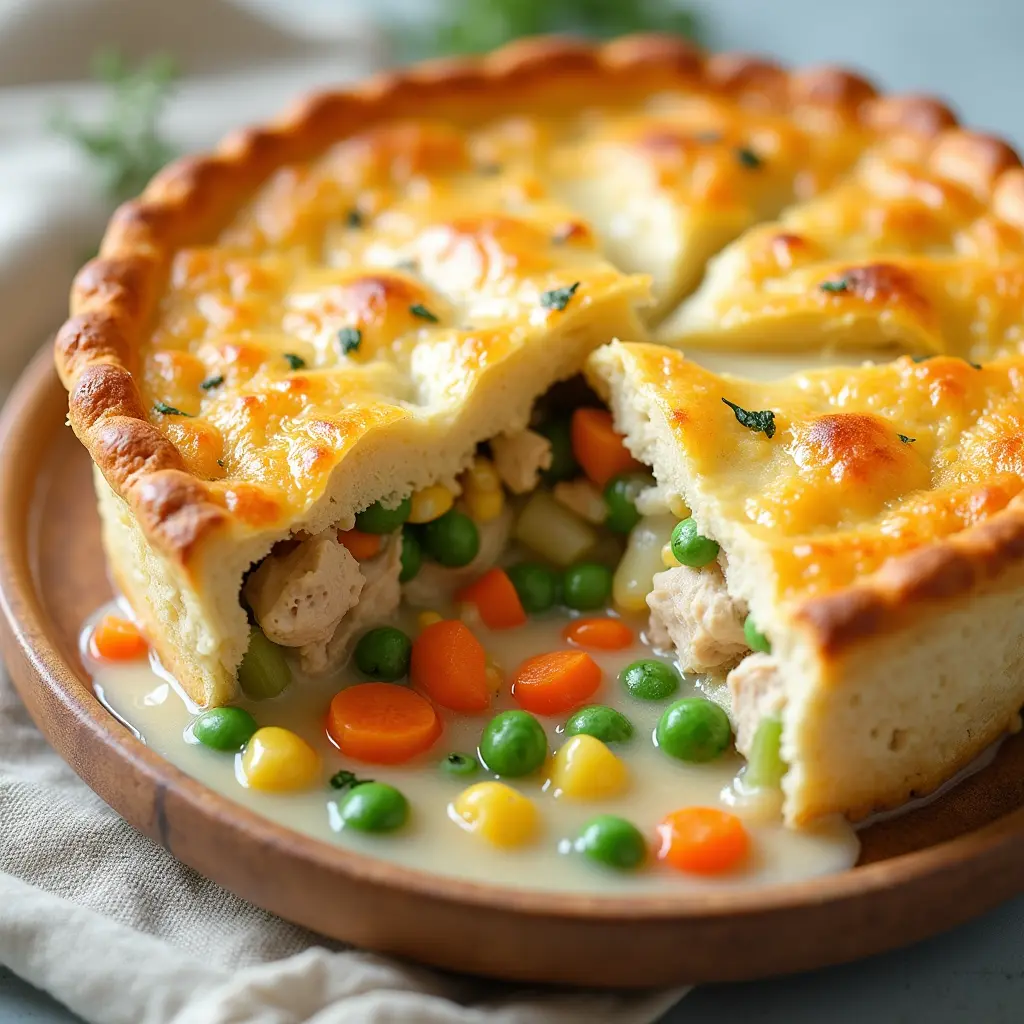
Marie Callender’s chicken pot pie is a favorite among frozen meals. Knowing its nutritional content helps you make better food choices.
A typical Marie Callender’s chicken pot pie has a lot of nutrients. It shows calories, macronutrients, and what’s in the meal.
- Calories: Approximately 630-670 per serving
- Total Fat: Around 35-40 grams
- Protein: Roughly 18-22 grams
- Carbohydrates: Approximately 60-65 grams
The pot pie is a filling meal with a mix of ingredients. Its nutrition label reminds us to control portions and eat balanced. While tasty, it’s a high-calorie choice that might not fit strict diets.
It’s important to think about the pot pie’s nutritional value. The flaky crust, tender chicken, and creamy sauce make it a satisfying meal. Nutritional awareness is key to enjoying this classic comfort food responsibly.
Remember, moderation is key when adding prepared meals to your diet.
If you’re watching your nutrition, compare the pot pie’s values to daily needs. This helps plan a balanced meal.
Healthier Alternatives and Homemade Options
Making a chicken pot pie at home lets you control the calories. You can also keep the flavor and nutrition high. By choosing the right ingredients and cooking methods, you can make this comfort food healthier without losing taste.
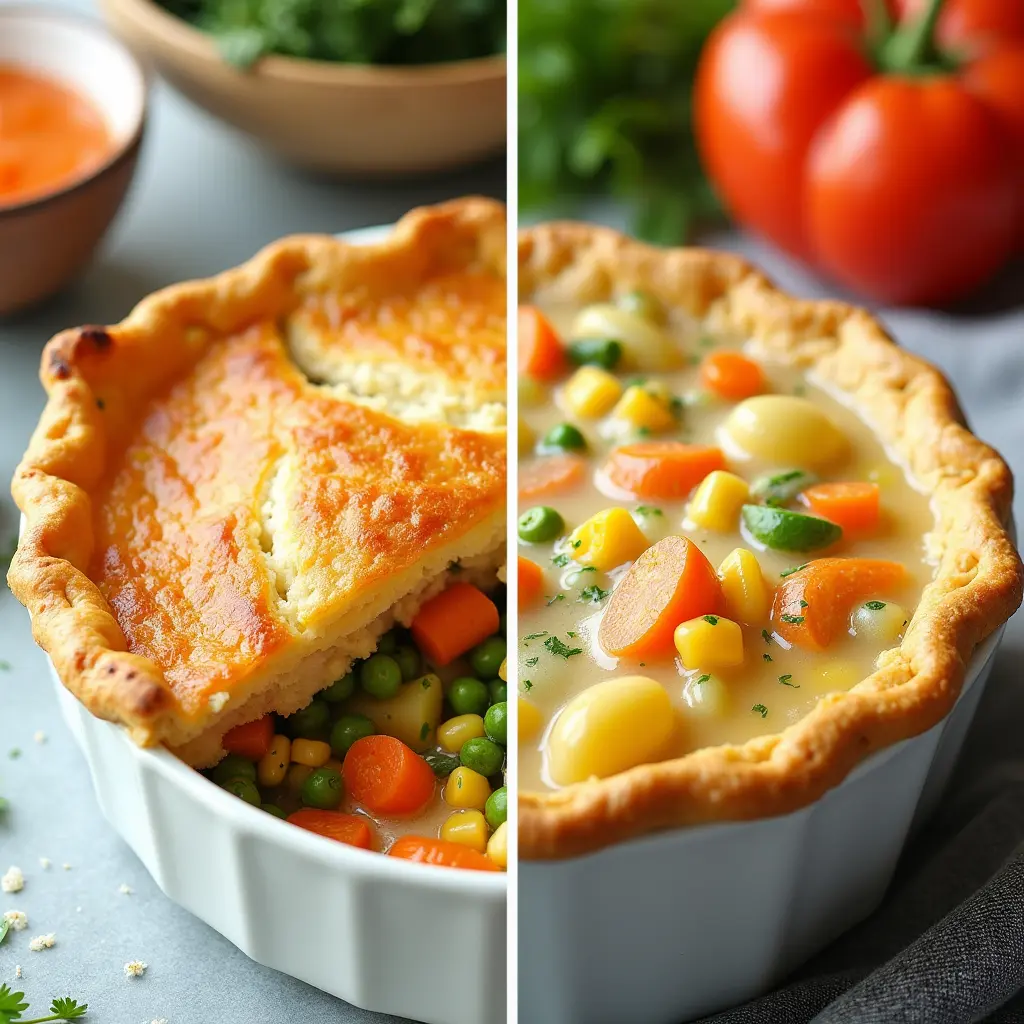
When thinking about chicken pot pie nutrition, making smart ingredient swaps can help. Here are some tips:
- Replace traditional pie crust with whole wheat or phyllo pastry
- Use lean chicken breast instead of dark meat
- Incorporate more vegetables to boost nutritional value
- Select low-fat dairy or plant-based cream alternatives
Smart Ingredient Swaps
By choosing the right ingredients, you can cut down on calories. Greek yogurt can replace heavy cream, adding protein. Use olive oil instead of butter for heart-healthy fats.
Portion Control Strategies
It’s important to control portion sizes for balanced nutrition. Here are some ideas:
- Use smaller ramekins for individual servings
- Cut traditional pie into smaller, controlled portions
- Pair smaller pot pie servings with fresh salad
Nutrition-Focused Cooking Methods
Choose baking or air frying over deep-frying to reduce oil. These methods keep flavors good while cutting calories. Try using herbs to add taste without extra calories.
Conclusion
Learning about chicken pot pie nutrition helps you make better food choices. You’ve seen how important balance is in enjoying this classic dish. Knowing its calorie and nutrient content lets you savor it without guilt.
Studies show that controlling portions and picking the right ingredients are key to a healthy diet. Store-bought pies vary a lot, so it’s vital to read labels and understand what’s in them. Making your own pie gives you more control over what you eat.
With this knowledge, you can now enjoy chicken pot pies with confidence. Whether you pick a frozen pie or make one yourself, you can make choices that fit your health goals.
For more tips, healthy recipes, and nutrition advice on chicken pot pies, contact our culinary experts at [email protected]. Start your journey to tasty and healthy eating today.
FAQ
How many calories are in a typical chicken pot pie?
The calories in a chicken pot pie vary. They usually range from 300 to 700 calories. For example, Marie Callender’s classic chicken pot pie has about 520 calories per serving.
Are chicken pot pies nutritionally balanced?
Chicken pot pies have proteins, carbs, and fats. But, they are often high in calories and sodium. They do contain some nutrients from chicken and veggies. Yet, they are not a low-calorie or healthy meal without changes.
How can I make a healthier chicken pot pie at home?
For a healthier version, use whole wheat pie crust and add more veggies. Choose lean chicken breast and low-fat milk instead of heavy cream. Control your portion sizes. Greek yogurt can be a creamy substitute, and add more nutrient-rich veggies.
What are the main nutritional components in a chicken pot pie?
Chicken pot pies have protein from chicken, carbs from crust and veggies, and fats from butter and cream. They also have vitamins A and C, calcium, and iron. The exact nutrients depend on the recipe and ingredients.
How do store-bought chicken pot pies compare nutritionally to homemade versions?
Store-bought pies like Marie Callender’s have more sodium, preservatives, and calories than homemade ones. Making your own pie lets you control ingredients. You can reduce fat, increase nutrients, and tailor it to your diet.
What is the recommended serving size for chicken pot pie?
Chicken pot pies are usually single servings, about 8-10 ounces. Nutritionists suggest being mindful of portion sizes. You might want to share a pie or save half for later to manage calories.
Can chicken pot pie be part of a balanced diet?
Yes, chicken pot pie can be part of a balanced diet if eaten in moderation. It’s important to balance it with lighter, nutrient-rich meals. Pairing it with a fresh salad or steamed veggies adds nutritional value.
What should I look for when choosing a chicken pot pie?
When picking a chicken pot pie, check the nutrition label for calories, sodium, and ingredient quality. Choose pies with whole ingredients, lower sodium, and a good balance of protein and veggies. Opt for brands that use lean chicken and minimal processed ingredients.
🌟 Your Opinion Matters! Share a Review
There are no reviews yet. Be the first one to write one.

